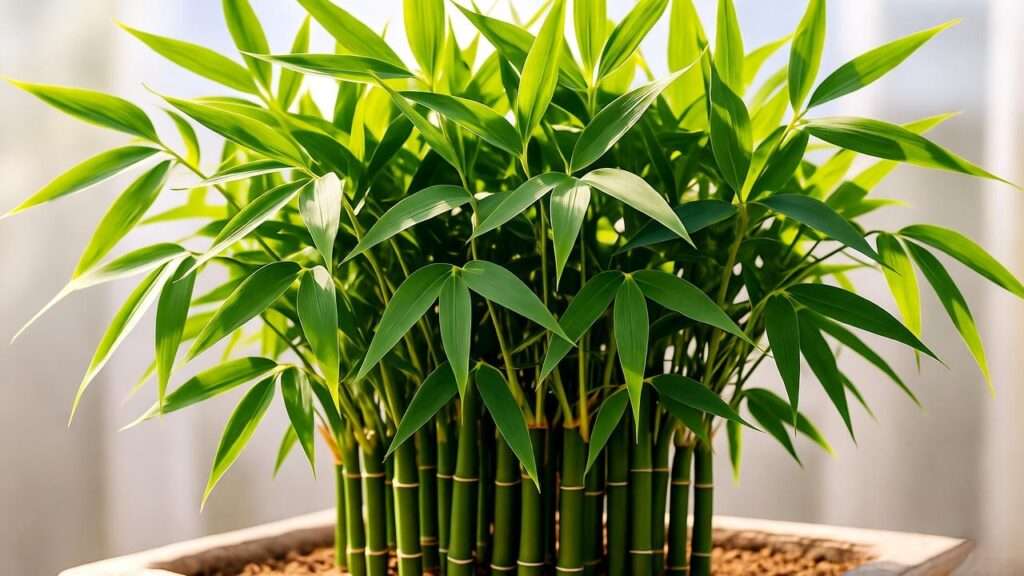Imagine a tiny forest of lush, green bamboo swaying gently in a shallow pot, transforming your space into a tranquil oasis. Bonsai bamboo, with its delicate elegance and surprising resilience, is the perfect blend of nature and art. Whether you’re a beginner or a seasoned plant enthusiast, mastering bonsai bamboo plant care can elevate your home decor and bring a sense of calm to your daily life. This comprehensive guide dives deep into every aspect of nurturing your bonsai bamboo, from light and water to pruning and seasonal care. Let’s unlock the secrets to keeping your miniature masterpiece thriving! 🌱
1. Understanding Bonsai Bamboo: What Makes It Unique? 🌿
1.1 What Is Bonsai Bamboo?
Bonsai bamboo is a captivating miniature version of bamboo, sculpted using traditional bonsai techniques to create a compact, artistic plant. Unlike true bonsai trees, which are woody perennials, bonsai bamboo belongs to the grass family, making it unique in the bonsai world. It’s often confused with lucky bamboo (Dracaena sanderiana), but true bonsai bamboo is derived from species like Bambusa or Phyllostachys, carefully trained to stay small yet vibrant.
This plant holds cultural significance in many traditions, symbolizing resilience, flexibility, and peace. Its slender stalks and lush foliage make it a favorite for minimalist home decor, small apartments, or Zen-inspired gardens. Understanding its distinct nature is the first step to successful care.
1.2 Benefits of Growing Bonsai Bamboo
Why choose bonsai bamboo? For starters, its compact size (typically 6–24 inches tall) makes it ideal for small spaces like desks, shelves, or patios. It’s also surprisingly low-maintenance compared to other bonsai varieties, perfect for busy plant parents. Studies, like those from NASA’s Clean Air Study, suggest bamboo plants can improve indoor air quality by filtering toxins, adding a functional benefit to their aesthetic charm.
Beyond practicality, bonsai bamboo fosters mindfulness. Shaping and caring for it can be a meditative practice, offering emotional balance in a fast-paced world. As horticulturist Dr. Emily Chen notes, “Bonsai bamboo is a beginner-friendly gateway to the art of bonsai, blending simplicity with stunning visual impact.”
2. Essential Bonsai Bamboo Plant Care Requirements 🌞💧
2.1 Light: Finding the Perfect Balance
Light is the lifeblood of your bonsai bamboo. It thrives in bright, indirect sunlight, mimicking the dappled shade of its natural habitat. Place your bonsai near an east-facing window or in a spot with filtered light for 6–8 hours daily. Direct sunlight can scorch delicate leaves, causing brown, crispy edges, while too little light leads to leggy growth or yellowing.
How to Adjust:
- Too much light: Use sheer curtains to diffuse harsh rays.
- Too little light: Supplement with a grow light (6500K spectrum) during winter months.
- Pro Tip: Rotate your bonsai every few weeks to ensure even light exposure, promoting balanced growth.
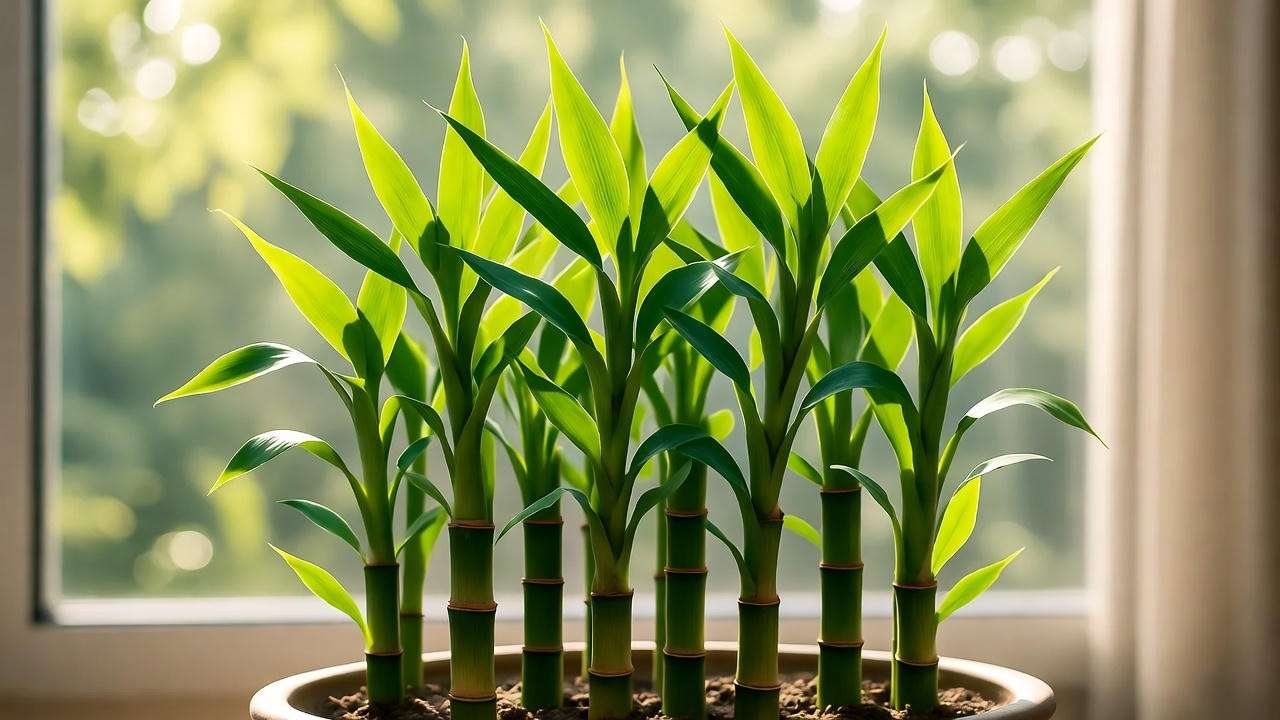
2.2 Watering: Keeping Your Bonsai Hydrated
Watering is where many bonsai bamboo owners stumble, but it’s simple once you know the basics. Aim to keep the soil consistently moist but never soggy. Check the top inch of soil: if it feels dry, it’s time to water. Use distilled or rainwater to avoid chlorine buildup, which can harm sensitive roots.
Watering Schedule:
- Spring/Summer: Water every 3–5 days, depending on humidity.
- Fall/Winter: Reduce to every 7–10 days as growth slows.
- Common Mistake: Overwatering leads to root rot, signaled by mushy roots or a foul odor. If this happens, trim affected roots and repot in fresh soil.
Pro Tip: Place a saucer under the pot to catch excess water, but empty it after 30 minutes to prevent waterlogging.
2.3 Soil and Potting: The Foundation of Health
The right soil mix is critical for bonsai bamboo. Opt for a well-draining, nutrient-rich blend—a mix of 50% akadama, 30% pumice, and 20% organic compost works wonders. This ensures proper aeration and moisture retention without suffocating roots. Choose a shallow bonsai pot with drainage holes to complement the plant’s aesthetic and prevent water buildup.
Repotting Guide:
- When: Every 1–2 years, or when roots circle the pot.
- How: Gently remove the plant, trim 1/3 of the root ball, and replant in fresh soil.
- Checklist:
- Sterilize tools to prevent disease.
- Loosen old soil gently to avoid root damage.
- Position the plant centrally and fill with soil, pressing lightly.
- Water thoroughly and place in indirect light for recovery.
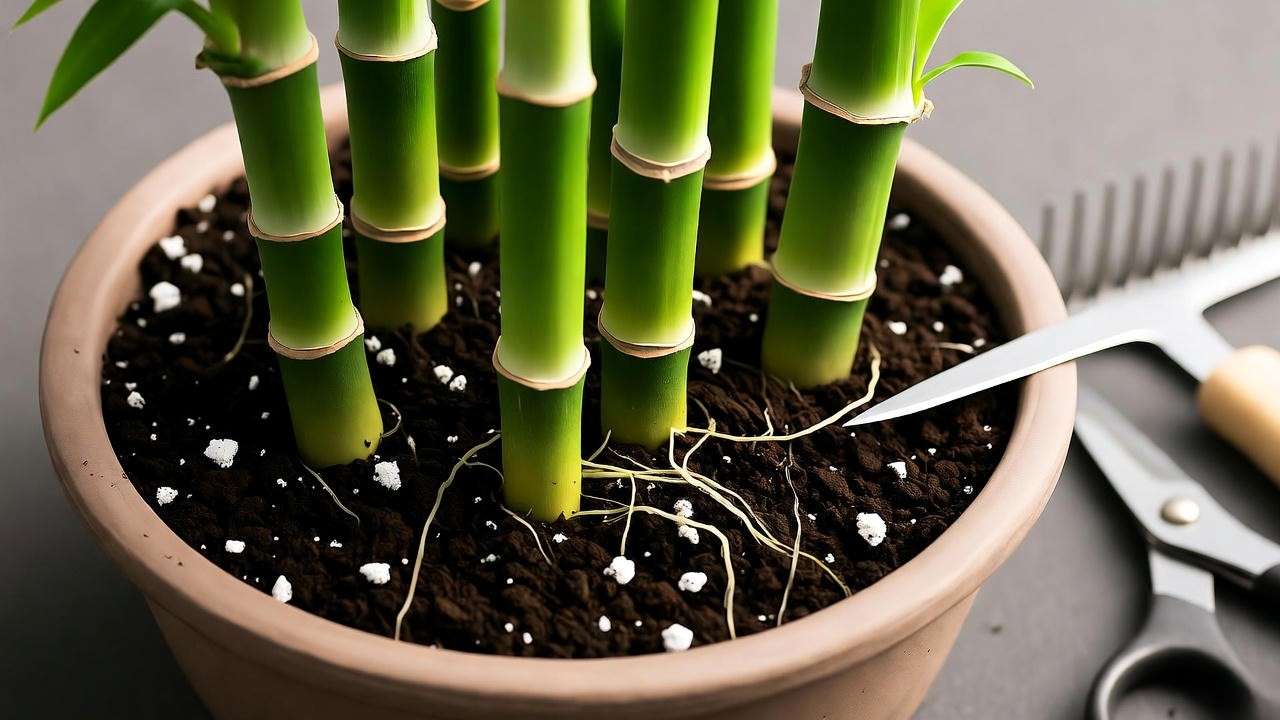
3. Pruning and Shaping: Crafting Your Bonsai’s Beauty ✂️
3.1 Pruning Basics
Pruning keeps your bonsai bamboo healthy and visually appealing. Use clean, sharp bonsai shears to remove dead, yellowing, or overcrowded leaves. Spring or early summer is the best time, as the plant is actively growing. Focus on thinning dense areas to improve airflow and light penetration, which reduces pest risks.
Pruning Steps:
- Inspect for dead or damaged leaves.
- Cut at a 45-degree angle just above a node to encourage new growth.
- Step back to assess the overall shape after each cut.
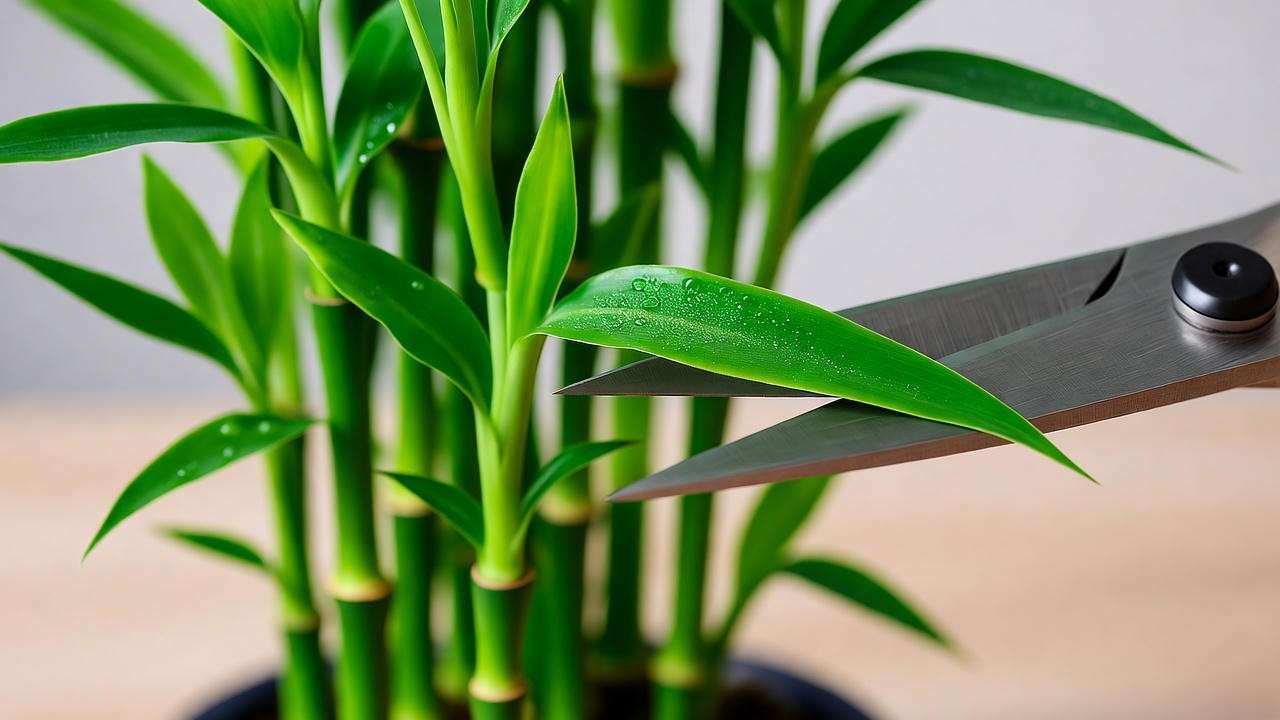
3.2 Shaping Your Bonsai Bamboo
Shaping is where bonsai bamboo becomes art. You can use wiring to guide stalks into styles like cascade (flowing downward) or upright (tall and structured), or let the plant grow naturally for a softer look. Wiring requires care to avoid damaging tender stalks—use soft aluminum wire and wrap loosely.
Cascade Style Example:
Imagine a bonsai bamboo cascading like a waterfall over the edge of its pot, with slender green stalks curving gracefully. To achieve this, wire the main stalk gently downward over 2–3 weeks, then remove the wire to maintain the shape. Regular trimming keeps the silhouette tidy.
Maintenance Tip: Check wired stalks weekly to prevent wire cutting into the plant as it grows.
4. Fertilizing and Nutrition: Feeding Your Bonsai 🍽️
Bonsai bamboo needs regular feeding to stay vibrant. Use a balanced, water-soluble fertilizer (e.g., 10-10-10 NPK) diluted to half strength. Apply monthly during the growing season (spring/summer) and reduce to every 6–8 weeks in fall/winter. Overfertilizing can burn roots, so follow package instructions carefully.
Signs of Nutrient Deficiency:
- Yellow leaves: Nitrogen deficiency; increase fertilizer frequency.
- Slow growth: Possible potassium shortage; switch to a potassium-rich blend.
- Weak stalks: Phosphorus may be lacking; adjust to a balanced formula.
A 2023 study in the Journal of Horticultural Science found that bamboo species respond well to balanced fertilizers with micronutrients like magnesium, enhancing leaf vibrancy. Always water before fertilizing to protect roots.
5. Common Problems and Solutions 🐛
5.1 Pests and Diseases
Even the resilient bonsai bamboo can face pests like spider mites or aphids, which are attracted to indoor plants. Spider mites leave tiny webs and speckled leaves, while aphids cluster on new growth, sucking sap. Regular inspection is key—check the undersides of leaves weekly.
Organic Pest Control:
- Neem Oil: Mix 1 tsp neem oil with 1 quart water and a drop of dish soap. Spray lightly every 7–10 days until pests are gone.
- Insecticidal Soap: Apply to affected areas, avoiding overuse to prevent leaf burn.
- Prevention: Maintain good airflow by spacing plants and avoiding overcrowding.
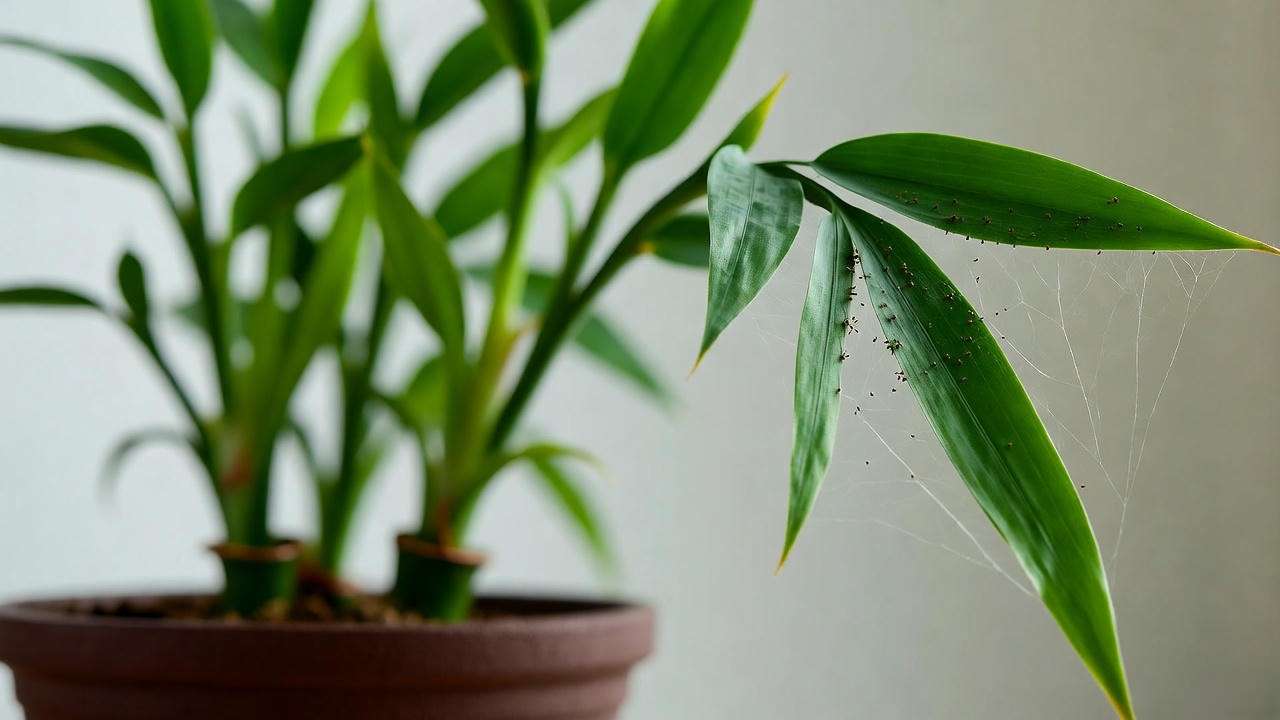
Fungal issues, like root rot or leaf spot, often stem from overwatering or poor ventilation. If you notice black spots or mushy roots, act quickly:
- Trim affected areas with sterilized shears.
- Improve drainage and reduce watering frequency.
- Ensure the plant gets adequate airflow, especially in humid climates.
Expert Tip: The American Bonsai Society recommends monthly inspections and a preventative neem oil spray during humid seasons to keep pests at bay.
5.2 Environmental Stress
Bonsai bamboo communicates distress clearly if you know what to look for. Here’s how to troubleshoot common issues:
- Yellowing Leaves: Often caused by overwatering, poor light, or nutrient deficiency. Check soil moisture, adjust light exposure, and fertilize if needed.
- Drooping or Wilting: Usually a sign of underwatering or temperature shock. Water thoroughly and ensure the plant stays in a stable environment (65–75°F).
- Brown Tips: Low humidity or tap water chemicals may be the culprit. Use a pebble tray with water to boost humidity or switch to distilled water.
DIY Humidity Tray Tutorial:
- Fill a shallow tray with pebbles.
- Add water until it just touches the pebbles’ tops.
- Place the bonsai pot on the pebbles, ensuring it doesn’t sit in water.
- Refill the tray as water evaporates to maintain 50–70% humidity.
6. Seasonal Care: Adapting to the Seasons 🌸🍂
Bonsai bamboo care shifts with the seasons, reflecting its natural growth cycles. Here’s how to adapt:
- Spring/Summer (Growing Season): This is when your bonsai bamboo thrives. Increase watering to every 3–5 days, fertilize monthly, and prune to shape new growth. Place outdoors (if possible) in a shaded spot to benefit from natural humidity, but protect from harsh midday sun.
- Fall/Winter (Dormancy): Growth slows, so reduce watering to every 7–10 days and stop fertilizing. If indoors, keep away from drafts or heating vents, which can dry out the plant. For outdoor bonsai, wrap pots in burlap to insulate roots in temperatures below 50°F.
Indoor vs. Outdoor Care:
- Indoor: Maintain stable temperatures and supplement light with a grow lamp during shorter winter days.
- Outdoor: Gradually acclimate your bonsai to outdoor conditions in spring to avoid shock. Use a windbreak in exposed areas.
Pro Tip: Mist leaves lightly in winter to combat dry indoor air, but don’t overdo it to avoid fungal growth.
7. Advanced Tips for Bonsai Bamboo Enthusiasts 🌟
Ready to take your bonsai bamboo to the next level? These advanced techniques will elevate your skills:
- Propagation: Divide mature clumps during repotting or take cuttings from healthy stalks. Place cuttings in water until roots form (2–4 weeks), then pot in a well-draining mix. This is a great way to expand your collection or share with friends.
- Creating a Bonsai Bamboo Forest: Group 3–5 small bonsai bamboos in a wide, shallow pot to mimic a miniature grove. Use varying heights for a natural look and maintain consistent care for all plants.
- Mixed Displays: Pair bonsai bamboo with complementary species like dwarf jade or ficus for a dynamic bonsai arrangement. Ensure all plants have similar light and water needs.
Case Study: Meet Sarah, a bonsai enthusiast from Seattle, who transformed her tiny apartment balcony into a bonsai bamboo haven. By propagating cuttings and experimenting with cascade styles, she created a stunning display that became the centerpiece of her outdoor space. Her secret? Consistent care and patience, proving that anyone can master bonsai bamboo with dedication.
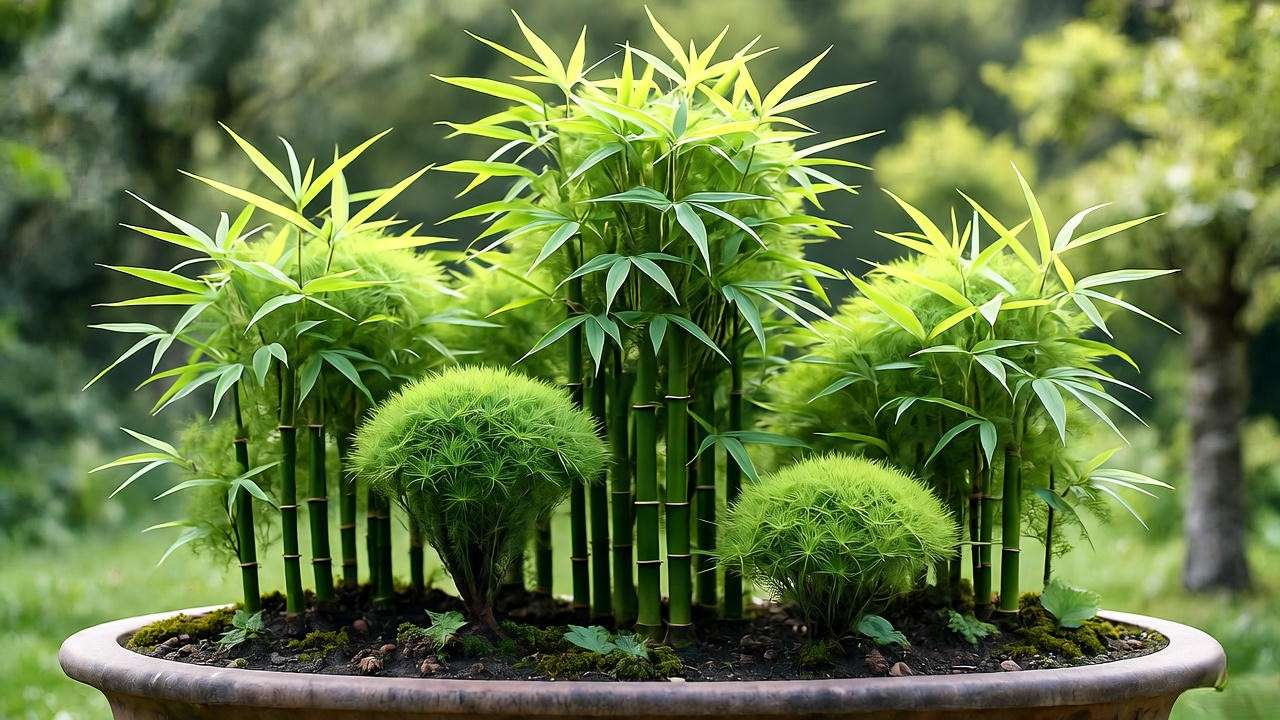
8. FAQs: Your Bonsai Bamboo Questions Answered ❓
How long does a bonsai bamboo live?
With proper care, bonsai bamboo can thrive for 10–20 years or more. Regular repotting, balanced nutrition, and pest prevention are key to longevity.
Can bonsai bamboo grow in low light?
While it prefers bright, indirect light, it can tolerate low light with slower growth. Supplement with a grow light to maintain health in dim spaces.
Is bonsai bamboo safe for pets?
True bonsai bamboo (Bambusa or Phyllostachys species) is non-toxic to cats and dogs, according to the ASPCA. However, avoid confusing it with lucky bamboo, which is toxic.
How do I know if my bonsai is healthy?
Look for vibrant green leaves, firm stalks, and steady growth. Yellowing, wilting, or soft roots indicate issues that need immediate attention.
Conclusion: Your Journey to Bonsai Bamboo Mastery 🌿
Caring for a bonsai bamboo is more than a hobby—it’s a rewarding journey that blends creativity, patience, and nature. By mastering bonsai bamboo plant care—from providing the right light and water to pruning with precision—you’ll cultivate a thriving miniature masterpiece that brings joy for years. Start with the basics, experiment with shaping, and don’t be afraid to make mistakes; each step teaches you more about this resilient plant.
Ready to begin? Try one new technique from this guide, like creating a humidity tray or shaping a cascade style, and watch your bonsai flourish. Share your progress in the comments below, or explore our related guides, like “Top 10 Bonsai Tools for Beginners” or “Lucky Bamboo Care Tips,” to deepen your plant care expertise. Your bonsai bamboo adventure starts now—happy growing! 🌱✨

